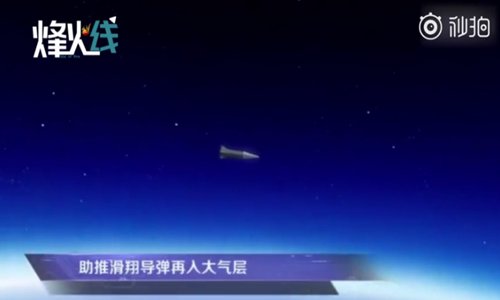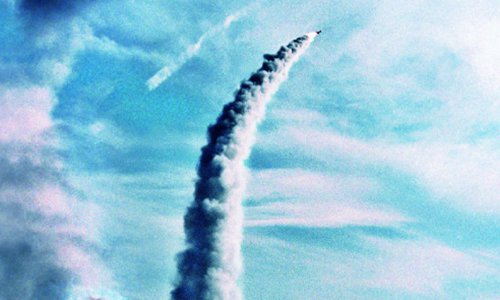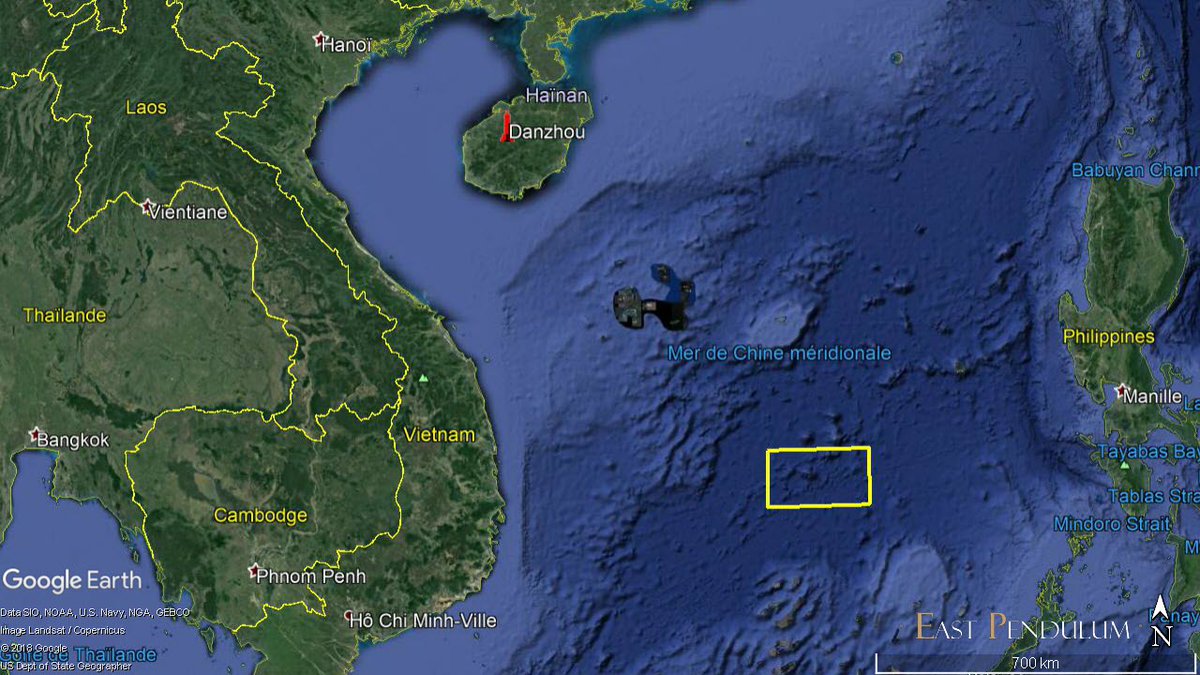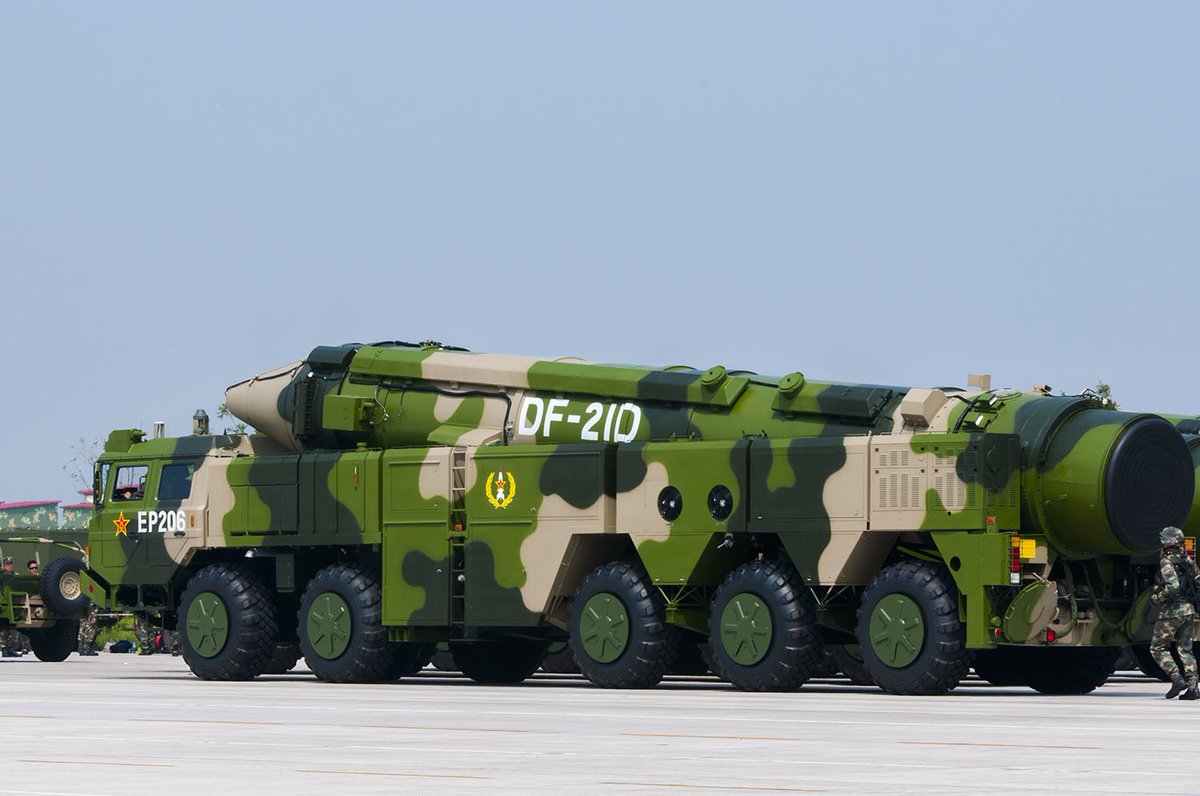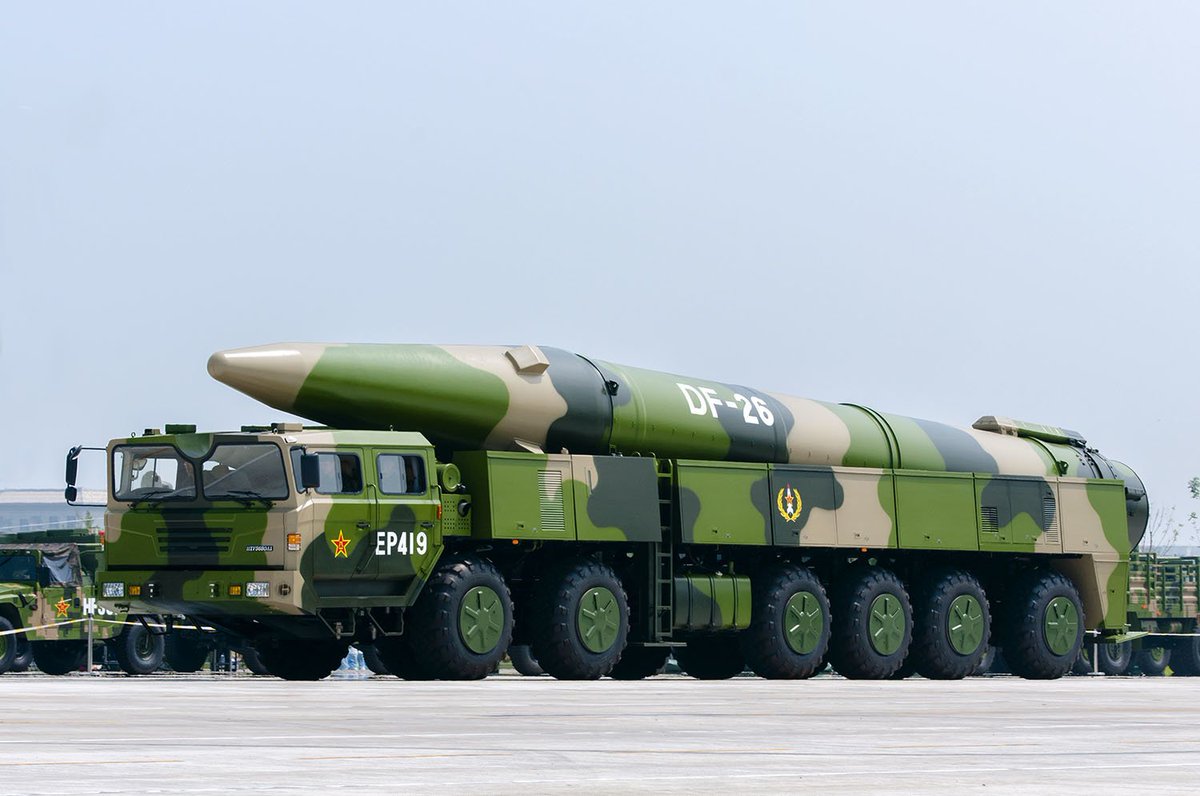JL-3 flight test timed to Shanahan visit to Singapore
BY: Bill Gertz
June 13, 2019 5:00 am
China conducted a flight test of its newest strategic submarine-launched missile, the JL-3, coinciding with the visit to Asia earlier this month by Acting Defense Secretary Patrick Shanahan.
American defense
officials confirmed that U.S. intelligence agencies assessed the June 2 flight test off the coast of northern China to be a JL-3 missile, Beijing's newest underwater intercontinental nuclear missile.
The flight test appeared timed to the speech at a Singapore defense conference a day earlier by Shanahan, who issued a harsh rebuke of Chinese bullying and hegemony in the South China Sea and elsewhere in Asia.
The missile was launched from a submarine test platform located in the Bohai Sea and flew west to an impact range in western China.
The flight test was reported in several Chinese online outlets, including the major commercial web portal Sina, as a JL-3 with a range of up to
7,400 miles.
One report on Sina Military stated that the JL-3 flight test included the use of a hypersonic glide vehicle—the ultra-high-speed maneuvering missile warhead designed to defeat U.S. missile defenses.
The defense officials said they were unable to confirm that the latest test involved a hypersonic last stage to the JL-3.
The JL-3 is expected to carry multiple, independently targetable reentry vehicles—warheads capable of targeting numerous cities.
A Pentagon spokesman declined to comment on the latest test.
The first flight test of the new missile was
by the
Washington Free Beacon in December.
The JL-3 missile is part of a major buildup of Chinese nuclear forces that includes several new land-based strategic missiles, a new bomber, and new submarine-launched missiles.
According to the Pentagon, China already is planning a follow-on version to the JL-3 that has not yet been deployed.
The Chinese missile test followed the speech by Shanahan at a defense forum in Singapore that was critical of the Chinese.
Shanahan indirectly called Chinese actions in Asia "perhaps the greatest long-term threat to the vital interests of states across this region." He accused China of seeking to undermine the rule-based international order.
"These actors undermine the system by using indirect, incremental actions and rhetorical devices to exploit others economically and diplomatically, and coerce them militarily," he said. "They destabilize the region, seeking to reorder its vibrant and diverse communities toward their exclusive advantage."
The Chinese activities include deploying advanced anti-ship and anti-aircraft missiles on disputed islands in the South China Sea in a bid to take over the entire strategic waterway used for several trillion dollars in trade annually.
Chinese influence operations are interfering in the U.S. political system, and predatory economic policies are seeking to gain leverage over developing nations.
China also is continuing to steal technology and trade secrets through cyber attacks and other means.
"We can’t wish away reality or continue to look the other way as countries use friendly rhetoric to distract from unfriendly acts," Shanahan said, referring to Chinese actions. "Now is the time to call out the mismatch between words and deeds by some in the region and encourage them to work constructively and transparently toward a positive future."
Chinese defense minister Gen. Wei Fenghe issued a threat against the United States at the same conference. "As for the recent trade friction started by the U.S., if the U.S. wants to talk, we will keep the door open," Wei said. "If they want a fight, we will fight till the end."
China in the past has used its military tests to send messages to visiting American officials. In January 2011, China conducted the first flight test of a new stealth jet, the J-20, during the visit of then-Defense Secretary Robert Gates. In his memoir
Duty, Gates recalled that an aide described the J-20 test as "about as big a ‘fuck you' as you can get."
Sina Military quoted a commentator, Chen Guangwen, as saying the missile was photographed and video-recorded by several Chinese online who described it as a luminescent object traveling over Shandong, Shanxi, Henan, and Hebei Provinces.
Authorities in eastern Liaoning Province, the area closest to the launch point, had issued an air closure notice to airmen for aircraft to avoid the region prior to the test firing. The region includes China's main submarine port.
The reported flight path stretched from the Bohai Sea to Xinjiang Province and was similar to an earlier test.
According to the Sina article, the use of a hypersonic last stage for the test is designed to defeat anti-missile systems and was likely one reason the test was given "partial publicization" of the hypersonic test by Chinese authorities. Beijing is known to tightly control all media regarding missile tests and other sensitive military activities.
Rick Fisher, a China military affairs expert, said China's propaganda organs, like the
South China Morning Post, tried to spin the flight test as something other than a JL-3 test.
"China's timing of a JL-3 test the day of Chinese defense minister Wei Fenghe's speech before the Shangri La conference served to underscore his threats against Taiwan and the United States," said Fisher, a senior fellow at the International Assessment and Strategy Center. "Every day China gives us another reason to view it as a rogue nation whose malevolence can only be contained by superior military force backed by active alliances."
Fisher said the June 2 event was the second JL-3 nuclear missile test.
The flight test was a "blatant nuclear missile threat," Fisher added, underscoring the finding of a new Pentagon Indo-Pacific strategy that states China "seeks Indo-Pacific regional hegemony in the near-term and, ultimately, global preeminence in the long-term."
China's PLA Rocket Forces, which is in charge of Chinese missile forces, posted a photograph of a road-mobile missile on its Twitter-like microblog account on Weibo with the rhetorical question, "Do you believe in UFOs?" a reference to initial reports that the flight test was an unidentified flying object.
That was followed by the PLA Navy posting a picture of a missile being launched from an underwater platform with the same question, "Do you still believe in UFOs?"
The
South China Morning Post said the missile tested was a land-based missile.
German freelance journalist Hinnerk Feldwisch-Drentrup witnessed the flight test from the window of his Finnair commercial flight from Helsinki to Hong Kong. Light from the missile was spotted near Mongolia. "Apparently I had actually captured the test of a ballistic missile with my camera," he told
Der Spiegel.
"It's our understanding that the JL-3 will be on the new Type 096 [ballistic missile submarine], which we expect to begin construction in the 2020s," said one defense official. "Not sure if existing platforms will be retro-fitted, or if the JL-3 is only for the future platform."
Little is known about the JL-3 missile. It is a solid-fueled system and follows the JL-2, China's sole deployed submarine-launched nuclear ballistic missile.
A Chinese report from 2017 quoted Chinese military experts as saying the new missile is based on the new DF-41 road-mobile strategic missile and is part of China's "second-strike" nuclear retaliation capability.
The report said a Type 032 submarine was recently modified for testing the JL-3.
According to the report in the
Keiji Ribao, a publication of the State Science and Technology Commission, the Chinese Academy of Sciences, and the State Administration of Science, Technology and Industry for National Defense, JL-3 is said to be similar in capability to Russia's new Bulava submarine-launched ballistic missile and better than the U.S. Trident II D-5 missile.









